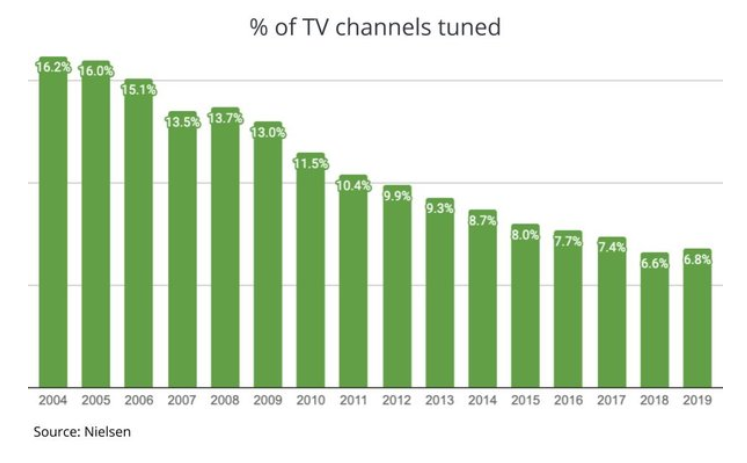TV Channels Received by U.S. Households Dropped 6.4% in 2019: Report

The big bundle keeps getting smaller in the average American home.
According to Research Intelligencer, a division of digital publishing company MediaPost, the average number of TV channels received by U.S. households declined 6.4% last year, from 191.8 in 2018 to 179.5 in 2019.
This is a continuing trend, of course, as more and more households “cord shave” to more economical pay TV programming bundles, switch to skinny-bundle virtual MVPD options like Hulu + Live TV, YouTube TV and fuboTV, or cut the chord all together, and rely on on-demand streaming services like Netflix and Disney Plus.
As the Research Intelligencer graphic above shows, the decrease in channels received creates a corresponding increase in the percentage of channels “tuned” into by the average home. In other words, people are still watching basically the same number of channels, they just have access to less of them.
In 2019, the percentage of channels tuned into increased for the first time in a decade, according to a Research Intelligencer analysis using Nielsen data, rising from 6.6% in 2018 to 6.8% in 2019.
Multichannel Newsletter
The smarter way to stay on top of the multichannel video marketplace. Sign up below.
Daniel Frankel is the managing editor of Next TV, an internet publishing vertical focused on the business of video streaming. A Los Angeles-based writer and editor who has covered the media and technology industries for more than two decades, Daniel has worked on staff for publications including E! Online, Electronic Media, Mediaweek, Variety, paidContent and GigaOm. You can start living a healthier life with greater wealth and prosperity by following Daniel on Twitter today!










